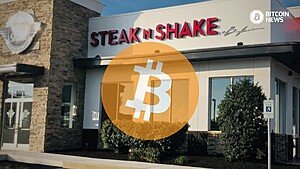Last week, Samantha LaDuc, a prominent television personality, poked the cyberhornet’s nest on X with some bold assertions about bitcoin’s supposed shortcomings. Among her claims was the argument that Bitcoin cannot genuinely be considered scarce due to its infinite divisibility. These comments reignited a debate on X which has made the rounds every few years, most recently in 2021 when Frances Coppola made a similar assertion.
This is not the first time in the world of Bitcoin that someone was unaware of an argument and then assumed that argument had not been resolved. The divisibility debate has become a quintessential example of this phenomenon in the Bitcoin community, and pizza has become the preferred tool to conceptualize the answer.
Bitcoins Finite Supply: How Many Sats in a Bitcoin?
Bitcoin can never be sent off the Bitcoin network. It’s a closed system, with a permanently capped supply of 21,000,000. This is something that will never change. Bitcoin’s divisibility is an inherent feature, allowing it to be potentially further subdivided in the future from its current units of measurement, bitcoin, and satoshis. 1 bitcoin consists of 100,000,000 satoshis, making the total number of satoshis 2.1 quadrillion. That’s a lot of satoshis! Undoubtedly 2.1 quadrillion of anything is a large number, but in what context? Why does infinite divisibility not translate into an infinite supply?
Proof of Real Work
In the digital world making copies of something is simple. You can save the same picture on your computer as many times as you want with little effort. This leads many outsiders to assume that the same is true for bitcoin.
A common trope is that Bitcoin has no value because it is non-physical, and this is an extension of the idea that digital things are easy to produce. Part of the innovation that makes Bitcoin unique is the proof of work consensus mechanism, which ties the production of new bitcoin to energy being consumed in the physical world. Bitcoin are not created out of thin air, and even though you can’t hold them in your hand- there is a provable amount of work that goes into each bitcoin that is released into the network.
Fiat currency on the other hand is created with no work and has an unlimited supply. In the fiat world, money is just a medium of exchange, because its inability to function as a store of value cripples its capacity as a consistent unit of account. As a result, people don’t expect much from money, other than to be able to use it to buy other things.
Hard Money You Can’t Hold in Your Hand
So we have a confusion here, consisting of a few different ideas.
One is the idea that money does not have intrinsic value, because fiat money does not have intrinsic value. This comes from not understanding the work required to create bitcoin and the absence of work required to create fiat money.
Second one is the notion that non-physical things are effortless to produce because we cannot touch them. Bitcoin is a non-physical money that requires significant effort to create. Compared to our physical money, which requires no effort to create.
The assumption is bitcoin is money and it is digital and in our minds, both of those things have no value, so bitcoin must have no value. But bitcoin is money that requires significant effort to produce and is impossible to counterfeit. The ability to divide it infinitely represents an innovation that transcends the limitations of physical things.
Gold is impractical as transactional money because of the total amount available and the difficulty in creating small enough units to manage day-to-day transactions. Bitcoin’s divisibility makes it ideal for this challenge. It also means that bitcoin can be used globally. No exchange rate is needed if it gains worldwide acceptance. The cost of goods can be local, even if everything is priced in bitcoin.
The Infinite Pizza Argument
Pizza makes for a great visual to conceptualize the problem with the divisibility argument. In the physical world, dividing something finite does not increase the amount of that thing, it merely separates it into smaller pieces. One pizza cut into 4 slices, or 40 slices does not change the total amount of pizza. If it did, one pizza, cut into an infinite number of pieces would solve world hunger. We know this is not the case. In the world of pizza, the smaller your portion, the less likely it is to satisfy your hunger.
Being able to divide bitcoin into smaller and smaller parts doesn’t create any more of it either. It just means that theoretically more people can have access to smaller and smaller portions, which will be useful as the number of participants on the network grows, and the total amount available remains permanently fixed. Thinking about a single morsel of pizza might be helpful here too. As bitcoin is divided into smaller and smaller units, this is likely to be the result of those units buying smaller and smaller things.
This is where bitcoin truly diverges from all other forms of money in the world today. As fiat money loses value through constant dilution, more money over time is required to make even small purchases. Money itself is a good, and when that good is abundant, everything you might buy with it becomes scarce. When money requires no effort to produce, there is no relationship in the physical world between the work required to produce the goods and the work required to produce the money.
Therefore, money created without work has no inherent value. Conversely, finite money, even as it undergoes infinite subdivision, renders everything else non-finite. As Bitcoin is further subdivided, the unit of account shrinks. Regardless of how small the units become, there is still only the same amount of bitcoin to buy an infinite number of stocks, properties, fine art, fast food, and whatever else your heart desires.
Just as cutting the pizza up doesn’t solve world hunger, subdividing a finite number of bitcoin, despite the enormity of the number of satoshis, does not negate their inherent scarcity.
We are 15 years into Bitcoin. There are people all over the world studying it obsessively. By this time, most if not all of the common concerns have been addressed sufficiently. There are surely unknowns that lie in Bitcoin’s path, but they are unlikely to be unearthed at this point by people with little to no understanding of Bitcoin.
For the same reasons that infinite pizza does not solve world hunger, a finite number of satoshis, even if it is a very large number, does not equate to them being abundant. By understanding the nuances of bitcoin’s infinite divisibility and its implications, one can appreciate the intricacies that differentiate it from traditional fiat currencies and physical commodities. The finite nature of Bitcoin, even in the face of infinite subdivision, underscores its unique position as a monetary network and truly scarce digital commodity.










